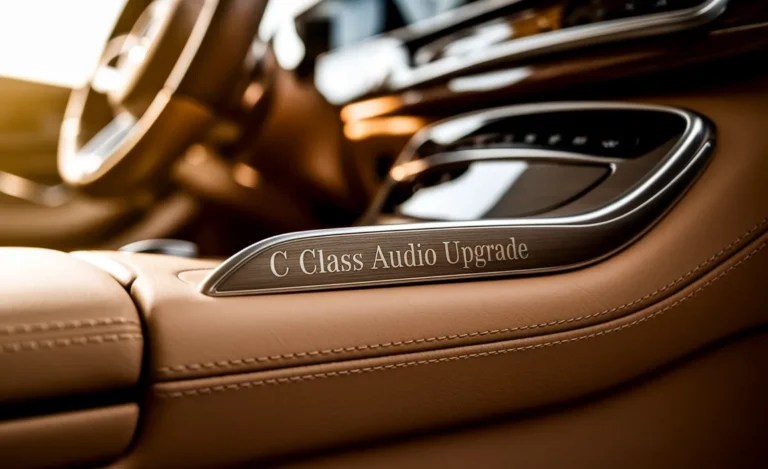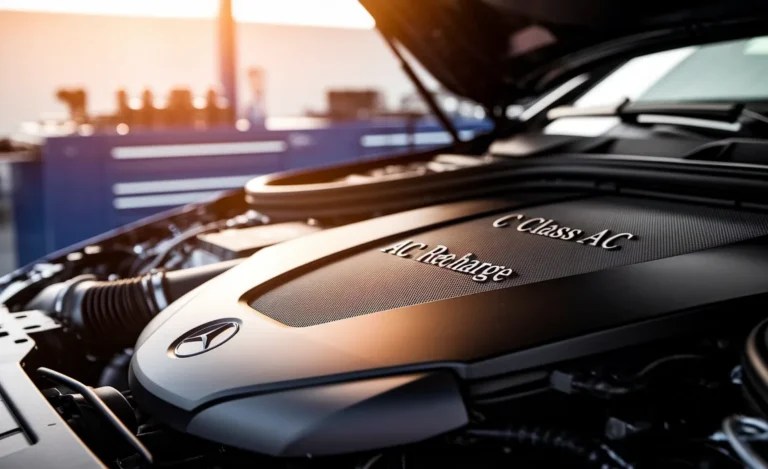Mercedes-Benz C Class Backup Camera: Ultimate Driving Perfection
Your Mercedes-Benz C-Class backup camera is a vital safety feature, offering enhanced visibility to make parking and reversing effortless. Properly understanding and utilizing its display, guidelines, and potential troubleshooting ensures a more confident and perfect driving experience for any C-Class owner.
Driving a Mercedes-Benz C-Class often feels like a symphony of engineering and luxury. Yet, even the most experienced drivers can face challenges in tight parking spots or busy lots. Maneuvering your premium vehicle backward can sometimes feel like an anxious dance.
This is precisely where the C-Class backup camera transforms the experience. It provides a crisp, clear view of what’s behind you, taking the guesswork out of reversing. We’ll guide you through understanding your camera, making the most of its features, and ensuring it’s always ready to assist.
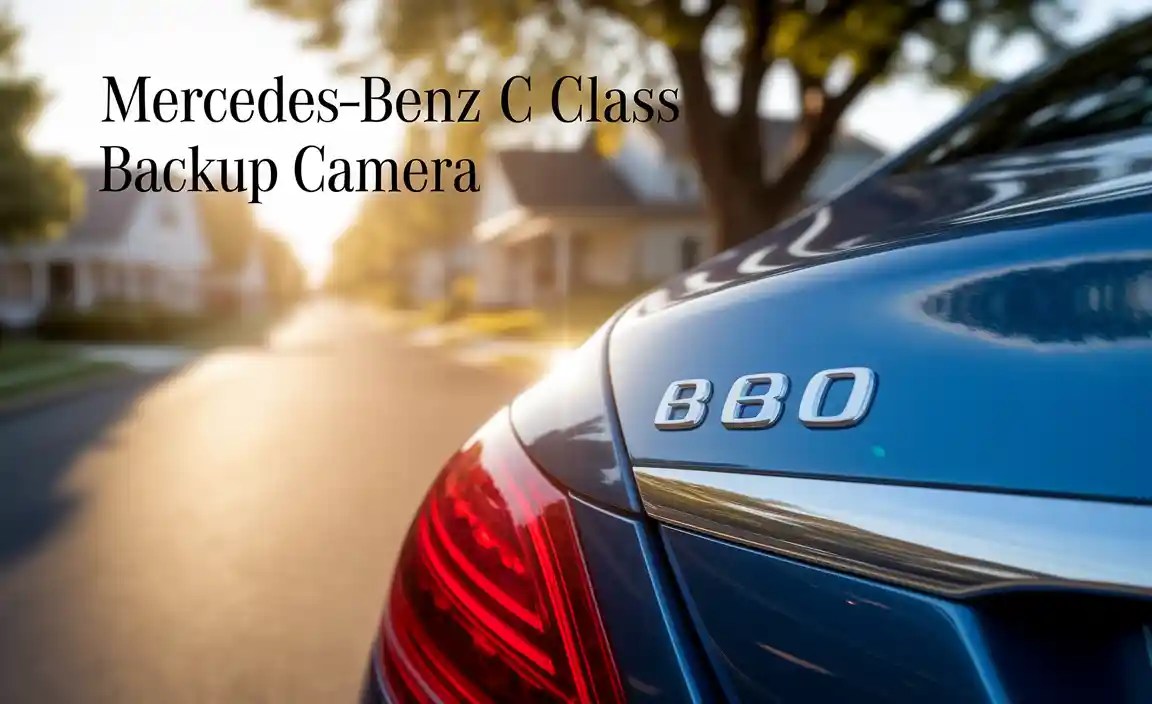
What is a C-Class Backup Camera and Why is It Essential?
A C-Class backup camera, also known as a rear-view camera or reversing camera, is an automotive safety system designed to display a live video feed of the area behind your vehicle. Integrated discreetly, it typically activates automatically when you shift the transmission into reverse. This technology significantly enhances driver awareness, reducing the risk of collisions with obstacles, pedestrians, or other vehicles during low-speed maneuvers.
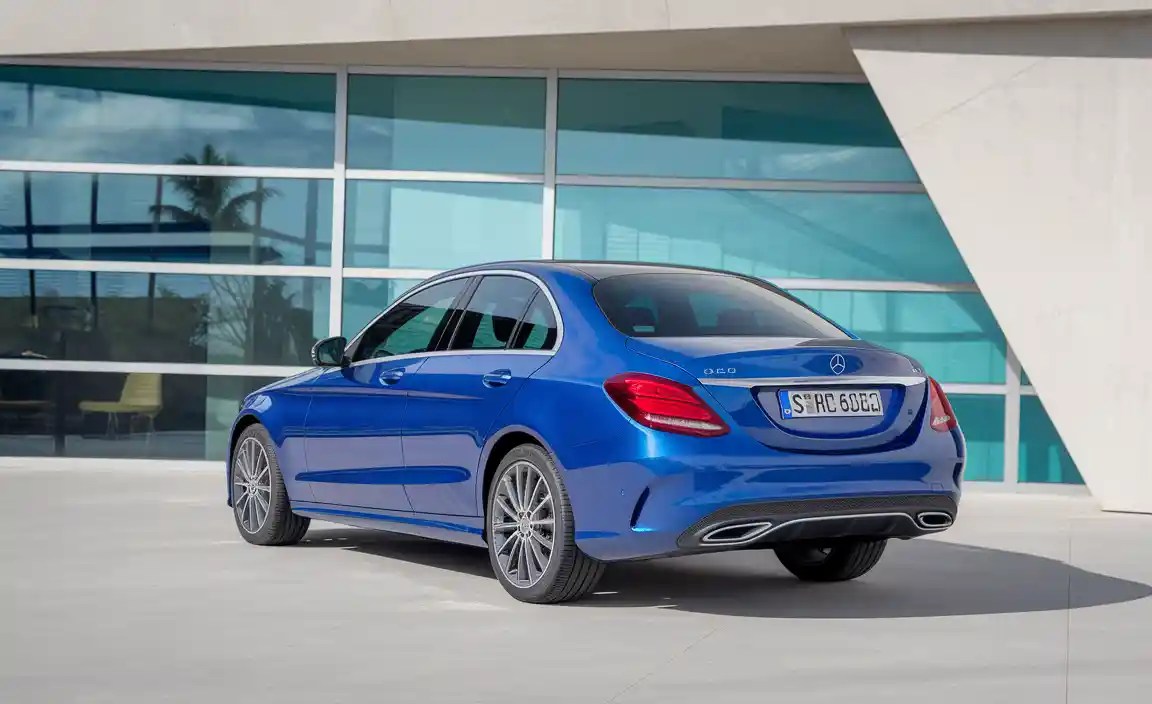
For a luxury vehicle like a Mercedes-Benz C-Class, the backup camera isn’t just a convenience; it’s an integral part of the advanced safety suite. It complements the vehicle’s sensors and parking assistance systems by providing a visual confirmation of your surroundings. Understanding its operation is key to leveraging its full potential for safer, more competent driving.
How It Works: The Technology Behind the View
The C-Class backup camera system is elegantly simple from a user’s perspective but relies on sophisticated technology. Here’s a breakdown of its core components:
- The Camera Unit: A small, wide-angle lens is typically mounted on the rear of your C-Class, often near the trunk release or license plate. This lens captures the video feed. Wide-angle lenses are crucial for capturing a broad field of view, minimizing blind spots.
- The Display: The video feed is transmitted to a display screen, usually the central COMAND or MBUX infotainment screen in your C-Class dashboard. This high-resolution screen shows you exactly what the camera sees.
- Control Module: This electronic unit processes the video signal from the camera and sends it to the display. It also manages the activation and deactivation of the camera system, usually triggered by the gear selector.
- Guidance Lines (Optional but Common): Many C-Class backup cameras feature dynamic or static guide lines overlaid on the video feed. These lines help drivers gauge their distance from obstacles and predict their path as they reverse. We’ll explore these in more detail soon.
The system is designed for seamless integration, meaning you don’t have to consciously think about operating it. Simply put the car in reverse, and the screen comes to life, offering an immediate visual aid.
Key Benefits of Using Your C-Class Backup Camera
Your C-Class backup camera offers a plethora of advantages that contribute to both safety and driving confidence:
- Enhanced Safety: This is paramount. Backup cameras drastically reduce the likelihood of backing into objects, children, pets, or other vehicles. They provide critical visibility in areas that would otherwise be blind spots.
- Improved Parking: Parking, especially parallel parking or maneuvering into tight spaces, becomes significantly easier and less stressful. The visual guide helps you align your vehicle with precision.
- Reduced Risk of Damage: Avoiding collisions means avoiding costly repairs and the inconvenience of bodywork. The camera is a proactive tool for protecting your investment.
- Increased Driver Confidence: Knowing you have a clear view of your surroundings allows for more assured and relaxed maneuvering, especially in challenging environments.
- Complements Parking Sensors: While parking sensors provide audible or visual alerts for proximity, the camera offers a direct visual representation, allowing you to see what you are approaching, not just that you are approaching something.
- Assists in Various Conditions: Whether it’s dark, raining, or foggy, the camera can offer clearer visibility than relying solely on mirrors and peripheral vision.
Understanding Your C-Class Backup Camera Display
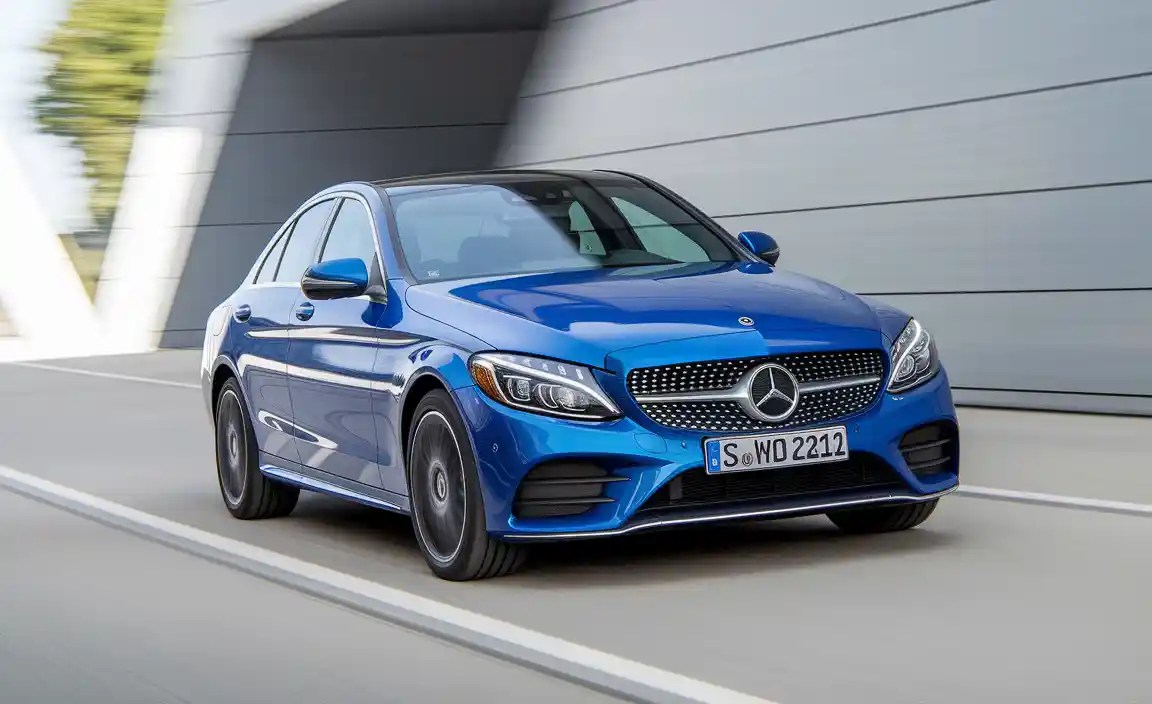
The display on your C-Class infotainment screen is your window to the rear. Familiarizing yourself with its elements is crucial for optimal use.
Interpreting the Video Feed
The video feed itself is usually presented from a slightly elevated perspective, looking down and backward. The wide-angle lens will distort objects at the edges of the frame slightly, a common characteristic of such lenses, but it’s essential for maximizing the field of view. Pay attention to the entire area shown, as small objects or moving figures can be easily spotted.
Navigating Guide Lines: Dynamic vs. Static
Your C-Class likely features guide lines designed to assist your reversing. These can be either static or dynamic:
- Static Guide Lines: These are fixed lines shown on the display. They typically represent a straight path and help you gauge the width of your car and align it with parking spots or straight lines. They do not change direction as you turn the steering wheel.
- Dynamic Guide Lines: These are the more advanced and incredibly useful lines. They are linked to your steering wheel’s angle. As you turn the steering wheel left or right, these lines pivot to show the intended path your vehicle will take. This feature is invaluable for maneuvering around corners or into parking spaces where a straight path isn’t possible.
Pro Tip: To understand your dynamic guide lines, practice in an open area. Turn the steering wheel slightly and observe how the lines move on the screen. Then, turn the wheel more and see the amplified effect. This hands-on test will build your confidence in interpreting their meaning.
Integrating with Parking Sensors
Your backup camera display often works in conjunction with your C-Class’s Parktronic parking assistance system. You might notice colored zones or indicators on the screen that correspond to the proximity warnings from the parking sensors. Typically, green indicates plenty of space, yellow means you’re getting closer, and red signifies a very close proximity, often accompanied by audible beeps or full braking.
The combination of the visual feed and sensor alerts provides a comprehensive safety net. The camera shows you where you are in relation to obstacles, while the sensors alert you to their presence and distance, especially in lower visibility areas or if an object is too low to be immediately visible on screen.
Tips for Optimal Use and Maintenance
To ensure your C-Class backup camera serves you effectively and reliably, follow these practical tips:
Keeping the Lens Clean
This is the simplest yet most critical maintenance step. The rear camera lens is exposed to the elements—dirt, dust, rain, snow, and road grime can accumulate, obscuring the view.
- Regular Wiping: Make it a habit to wipe the lens whenever you clean your car, or even just use a soft, clean cloth or microfiber towel to gently wipe it.
- Gentle Cleaning Solutions: If the lens is particularly dirty, use a mild soap and water solution or a dedicated automotive glass cleaner on the cloth, not directly on the lens. Avoid abrasive materials that could scratch the lens surface.
Understanding Weather Conditions
Be aware that extreme weather can affect camera performance:
- Heavy Rain/Snow: Water droplets or snow accumulation can partially or fully block the lens. The dynamic lines might still be visible, but the video feed could be compromised.
- Fog/Mist: Condensation can form on the lens, similar to a bathroom mirror. Allow the camera and lens to normalize to the ambient temperature, or gently wipe it.
- Low Light: While modern cameras have good low-light performance, very dark conditions will naturally reduce visibility. Your headlights will illuminate the immediate area, but the camera won’t see beyond that.
Practicing Progressive Integration
Don’t just rely on the camera; use it to enhance your existing reversing skills. Initially, you might focus heavily on the screen. As you become more comfortable:
- Glance, Don’t Stare: Use the camera screen as a primary guide, but also periodically glance at your side mirrors and, if safe, over your shoulder. This holistic approach builds spatial awareness.
- Test Your Knowledge: Practice in a safe, empty parking lot. Reverse towards a designated obstacle (like a traffic cone) using only the camera, then check your accuracy. Repeat this with mirrors and camera combined to see how they complement each other.
Avoiding Distractions
While the camera is a safety feature, it shouldn’t be the only thing you focus on. Ensure the infotainment screen is set to display the camera clearly. Minimize other distractions like phone calls or complex infotainment adjustments while reversing. The goal is to use the camera as a tool, not a crutch that leads to complacency.
Troubleshooting Common Backup Camera Issues

Most of the time, your C-Class backup camera will work flawlessly. However, if you encounter issues, here are some common problems and their solutions:
Camera Not Turning On
Possible Cause: A blown fuse.
Solution: Consult your C-Class owner’s manual to locate the fuse box and identify the specific fuse for the rear-view camera system. Inspect the fuse and replace it with one of the same amperage if it’s blown.
Where to find your fuse box diagrams: Mercedes-Benz provides detailed diagrams in the owner’s manual, usually found in the glove compartment or accessible via the infotainment system. For a digital resource, you can often find PDF versions on the official Mercedes-Benz USA website or other reputable Mercedes-Benz enthusiast sites that have archived manuals.
Possible Cause: Wiring issue or loose connection.
Solution: This is more complex and might require professional assistance. The wiring harness connecting the camera to the display could be damaged or dislodged, especially if there’s been recent work on the rear of the vehicle.
Distorted or Blurry Image
Possible Cause: Dirty camera lens.
Solution: As mentioned in the maintenance section, simply clean the lens with a soft, damp cloth.
Possible Cause: Internal camera damage or moisture ingress.
Solution: If cleaning doesn’t resolve the issue, the camera itself might be faulty. This would require replacement, likely by a Mercedes-Benz dealership or a qualified automotive technician.
No Guide Lines or Static Lines Only
Possible Cause: Camera system setting.
Solution: On some Mercedes-Benz models with the COMAND or MBUX system, guide lines can be enabled or disabled through the vehicle’s settings menu. Navigate through your infotainment system’s “Vehicle” or “Display” settings to check if the guide lines option is activated. Consult your owner’s manual for the specific navigation path.
Possible Cause: Software glitch or a fault in the dynamic steering angle sensor.
Solution: A software reset of the infotainment system might resolve minor glitches. If the issue persists, particularly if you have other electronic system warnings, it might indicate a more significant electrical or sensor problem that needs professional diagnosis.
Intermittent Operation
Possible Cause: Loose connection or an overheating component.
Solution: Intermittent issues can be the most frustrating. It could be a sign of a connection that shifts with vibration or temperature changes. This often requires a technician to meticulously check all junctions and wiring.
When to Seek Professional Help
While some minor issues can be resolved with basic DIY checks, it’s wise to contact a Mercedes-Benz service center or a trusted independent specialist if:
- You encounter persistent error messages on your display related to the camera or parking assistance.
- The camera is completely unresponsive after checking the fuse.
- The video feed is consistently distorted, black, or shows artifacts that cleaning doesn’t fix.
- You suspect wiring damage or a module failure.
- You are uncomfortable performing any of the troubleshooting steps.
Driving a Mercedes-Benz means embracing its advanced technology. Knowing how to address minor issues yourself and recognizing when to seek expert help ensures your C-Class backup camera remains a reliable asset for years to come.
Comparing Backup Camera Features Across C-Class Generations
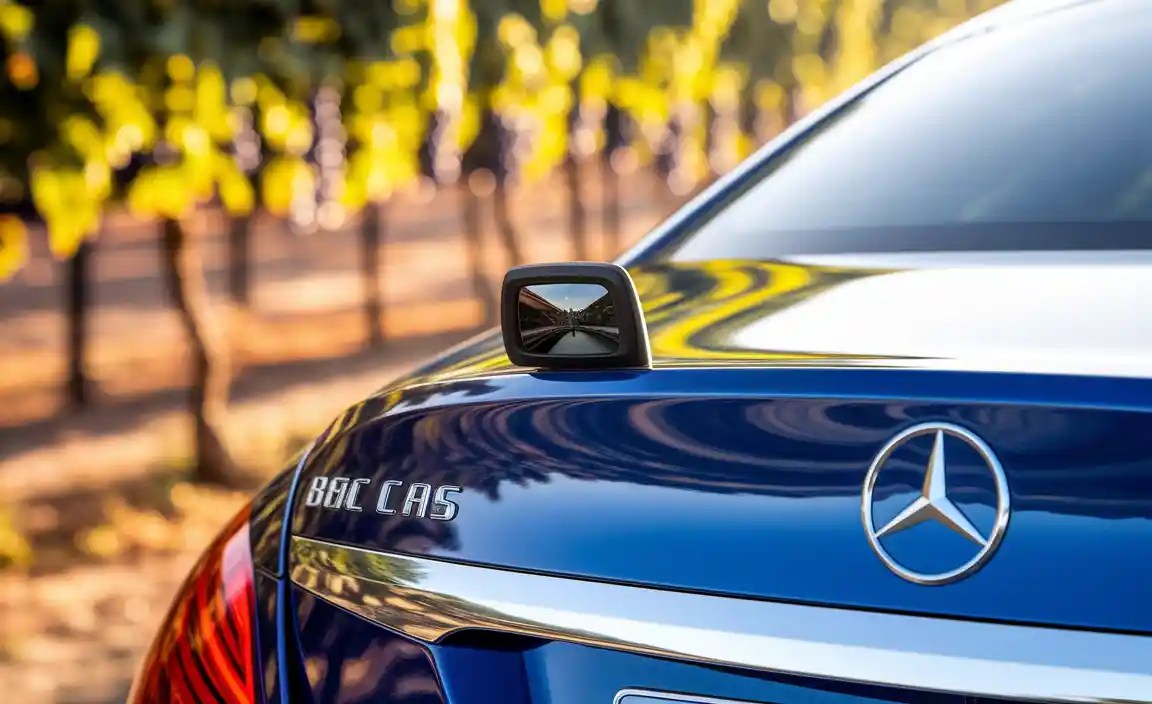
Mercedes-Benz consistently refines its safety and technology offerings. While the core function of a backup camera remains constant, the implementation and features can vary significantly between different generations of the C-Class. Understanding these differences can be helpful for prospective buyers or owners looking to understand their specific model’s capabilities.
Early Generations (W203, W204)
The W203 (2000-2007) and early W204 (2008-2014) C-Class models were among the first to widely adopt backup camera technology. In these generations:
- Camera Quality: Resolution might be lower compared to newer models, appearing slightly pixelated by today’s standards.
- Display: Often integrated into smaller, pop-up screens or the primary dashboard display, which might have been less vibrant or smaller in size.
- Guide Lines: Static guide lines were more common. Dynamic lines linked to steering were a rarer, high-option feature.
- Integration: While functional, the integration with other systems like parking sensors might have been less sophisticated.
Modern Generations (W205, W206)
Starting with the W205 (2015-2021) and continuing with the W206 (2022+), Mercedes-Benz has significantly upgraded the backup camera systems:
- Camera Quality: Expect higher resolution, improved low-light performance, and wider dynamic range for clearer images in varying lighting conditions.
- Display: Larger, higher-definition screens are standard, providing a more immersive and detailed view.
- Guide Lines: Dynamic guide lines are now standard or widely available. Some advanced systems might offer additional views, such as a split-view or a 360-degree bird’s-eye view, which is often comprised of multiple cameras working together but can be displayed through the reversing interface.
- Integration: Seamless integration with advanced parking assist systems, navigation, and even traffic sign recognition features. Some systems might offer automatic braking if an imminent collision is detected, even when in reverse.
- 360-Degree Camera System: Higher trims or optional packages might include a 360-degree camera system. This uses cameras on the front, rear, and sides of the vehicle to create a virtual top-down “bird’s-eye” view on the infotainment screen, making parking even in the most confined spaces incredibly precise.
When researching a specific C-Class model or trim, it’s always best to check the official specifications or the window sticker to understand the exact camera features included. The evolution of this technology is a testament to Mercedes-Benz’s commitment to safety and driver convenience.
The Future of Reversing Technology in the C-Class
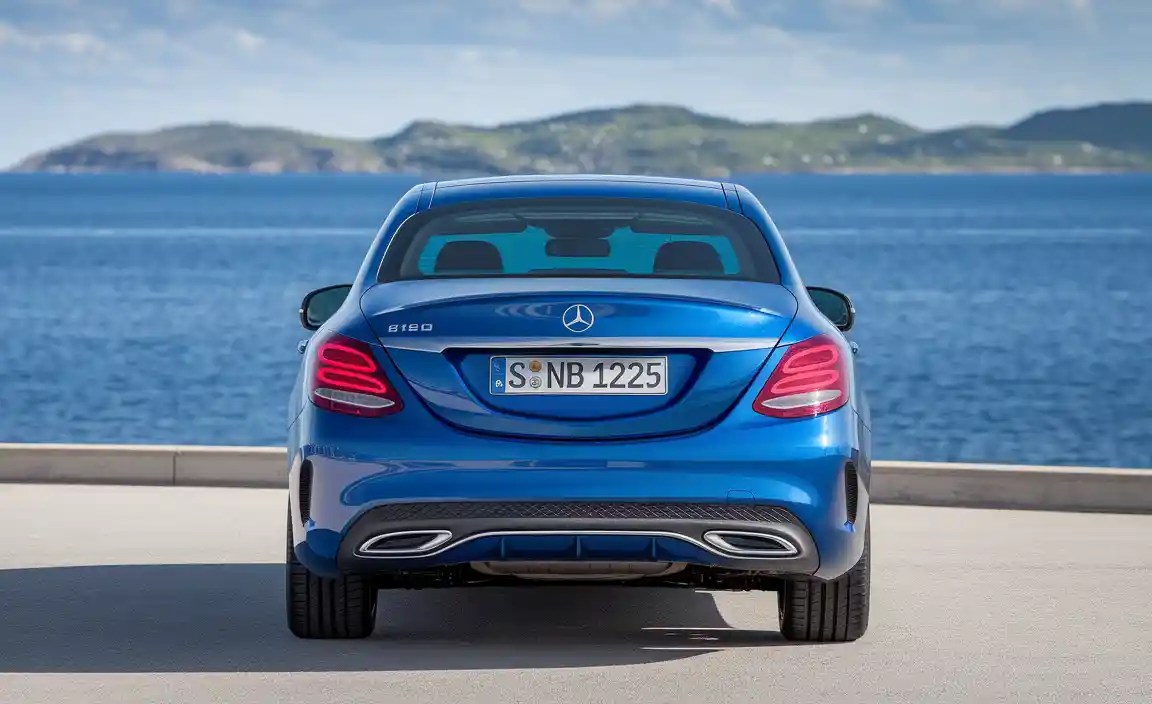
The C-Class backup camera is already a sophisticated tool, but automotive technology continues to advance rapidly. Looking ahead, we can anticipate several potential enhancements:
- Higher Resolution and Clarity: Expect even sharper video feeds with improved detail, potentially using higher-megapixel sensors.
- Enhanced Night Vision: Advanced infrared or thermal imaging capabilities could provide superior visibility in complete darkness, going beyond the limitations of current headlights.
- AI-Powered Object Recognition: Artificial intelligence could be integrated to not only display objects but also identify them (e.g., distinguishing between a wall, a shopping cart, or a child) and offer more proactive warnings.
- Augmented Reality (AR) Overlays: AR technology might overlay navigation cues or virtual projections directly onto the live camera

